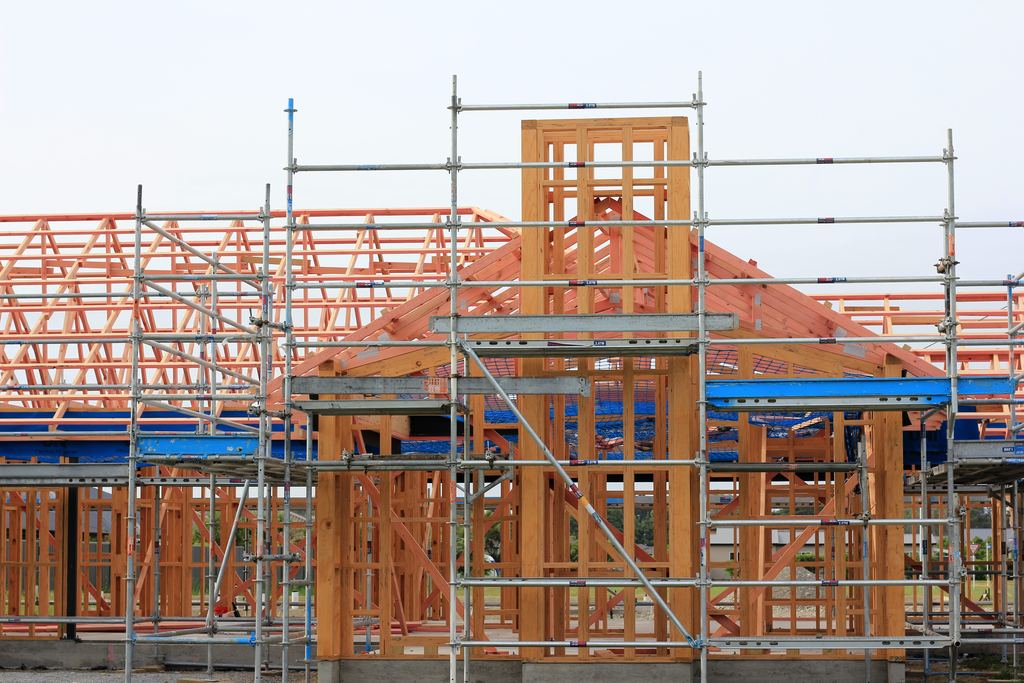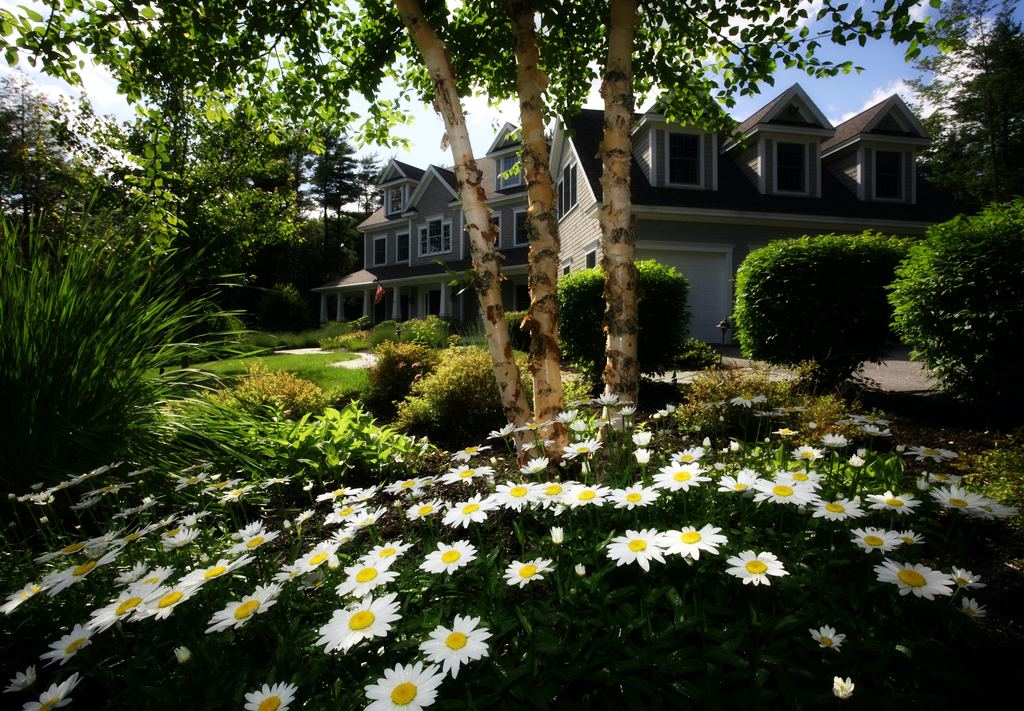
Are you dreaming of building your own home from the ground up? Or perhaps you’re in the midst of the exciting journey of new home construction. Look no further! Our blog is your ultimate resource for all things related to new home construction. From design inspiration and choosing the right contractors to maintaining your dream home, we’ve got you covered.
Discover the Art of New Home Construction:
Embark on a journey of imagination and creativity as we explore the art of new home construction. Dive into the latest trends in architectural design, innovative building materials, and eco-friendly construction practices. Uncover expert tips and insights that will guide you through each stage of the construction process, from creating a solid foundation to adding the finishing touches that make your home uniquely yours.
Choosing the Right Contractors:
Building your dream home requires a team of skilled professionals. We’ll guide you through the process of selecting the right contractors, architects, and designers who align with your vision and bring expertise to the table. Learn how to evaluate their portfolios, check references, and communicate effectively to ensure a smooth and successful construction experience. We will discuss small things that you can include in the new build ranging from green solar energy to energy conservation utilizing spray foam insulation. Discover the benefits of working with licensed and insured professionals who prioritize quality craftsmanship and attention to detail.
Creating Outdoor Oasis with Landscaping:
Enhancing your new home’s curb appeal and creating an inviting outdoor space is an essential part of the construction process. Explore the world of landscaping, from selecting the right plants and trees to designing hardscapes and concrete slab walkways and outdoor living areas. Our experts will provide tips on maximizing your outdoor space’s potential, creating a harmonious connection between your home and its surroundings.
Maintenance and Upkeep:
Once your dream home is complete, it’s important to prioritize its maintenance and upkeep. Learn the essential tasks and schedules to keep your home in optimal condition, from regular inspections to seasonal maintenance routines. Discover the benefits of proactive maintenance, including cost savings and preserving the value of your investment. We’ll also provide guidance on finding reputable contractors for repairs and renovations when the need arises.
Building Your Dreams, One Home at a Time:
At “Building Dreams,” we believe that every home has a unique story to tell. Whether you’re a homeowner embarking on the construction journey or an aspiring homeowner dreaming of building your own haven, we’re here to inspire, educate, and support you along the way. From design inspiration and choosing the right contractors to maintaining your home’s beauty and functionality, our blog is your trusted companion in making your dreams a reality.
Join Our Community:
Connect with a thriving community of fellow homeowners, construction professionals, and design enthusiasts who share your passion for new home construction. Engage in discussions, share your experiences, and gain valuable insights from others who have gone through or are currently going through the construction process. Our community is a place to find inspiration, ask questions, and celebrate the joys and challenges of building your dream home.
Start Building Your Dreams:
Are you ready to embark on the exciting journey of new home construction? Let “Building Dreams” be your guide. Explore our articles, project showcases, and expert advice to gather the inspiration and knowledge you need to make informed decisions and create a home that reflects your unique style and aspirations. Together, let’s build dreams, one home at a time.
- Constructing Your Dream: Navigating Through New Home Construction

Introduction: Crafting Spaces, Building Dreams
New home construction is a journey of envisioning, planning, and creating spaces that resonate with dreams and practicalities alike. Whether choosing luxurious artificial turf for your yard or ensuring robust home exteriors, every decision carves out the aesthetics and functionality of your future abode. Let’s explore the myriad facets that shape the construction of a new home.
The Green Canvas: Landscaping Decisions in New Construction
The outdoor spaces of your home are a canvas awaiting vibrant strokes of design and functionality. Engaging in tree management practices, such as tree trimming, not only enhances the aesthetic appeal but also ensures safety and longevity of the surrounding nature. Complementing these with choices like artificial turf can merge the ease of maintenance with an evergreen outdoor visual appeal.
Safeguarding Your Spaces: Ensuring Durability Through Adequate Maintenance
While the visuals captivate and interiors enchant, the true longevity of your home is also governed by the unsung heroes like well-maintained gutters. Ensuring that facets such as gutter cleaning are integrated into the maintenance schedule preserves the integrity of your home, safeguarding it against water damage and enhancing the lifespan of your construction.
Strategic Planning: From Paper Dreams to Tangible Realities
New home construction pivots around an axis of thorough planning. From choosing the right materials to incorporating future-proof designs, and ensuring that each element, whether visible or foundational, is selected with foresight and understanding, your dream home gradually takes shape, promising a future of comfort, safety, and aesthetic delight.
Conclusion: A Home that Echoes with Dreams and Stands on Robust Realities
The journey from conceptualizing to realizing your new home is embroidered with decisions, from overt aesthetic choices to the subtle, underlying selections that promise durability and safety. Through strategic planning, apt choices in landscaping, and a commitment to periodic maintenance, your new home stands as a testament to your dreams, offering not just a dwelling but a space that resonates with stories, aspirations, and secure, serene living.
©2023 Home Building Narratives. All Rights Reserved.
- Peace of Mind: Ensuring a Pest-Free Living Experience in Your New Home

Moving into a new home can be an exciting journey filled with possibilities. However, the prospect of dealing with pests like rodents, insects, or termites can dampen this enthusiasm. To help you enjoy a serene living experience, we have compiled practical steps to ensure your new home stays pest-free.
Before Moving In: Pest Inspection
Before sealing the deal on your new home, it’s crucial to carry out a thorough pest inspection. A professional pest inspector can identify signs of infestations, such as droppings, gnaw marks, or termite damage. This early detection allows for remedial actions to be taken before moving in, ensuring your new home gets a fresh, pest-free start.
Step 1: Seal Points of Entry
Pests are experts at exploiting small gaps to gain access to your home. To thwart their efforts, conduct a thorough examination of your house’s exterior. Seal cracks in walls, gaps around doors and windows, and openings for utilities and pipes. By eliminating these potential points of entry, you can significantly reduce the chances of an infestation.
Step 2: Keep Your Home Clean
Most pests are attracted to food and shelter. By maintaining a clean home, you remove the incentives for pests to take up residence. Regularly take out the trash, avoid leaving dishes in the sink overnight, and store food in sealed containers. Additionally, regular vacuuming can eliminate pest eggs and reduce the chances of an infestation taking hold.
Step 3: Maintain Your Outdoor Spaces
Pests often set up camp outside before moving indoors. Regular yard maintenance can help disrupt their plans. Trim tree branches that touch your home to prevent pests from using them as a bridge inside. Keep firewood, a favorite nesting spot for many pests, at least 20 feet away from your home. Regularly clean gutters to prevent stagnant water, which can attract pests and provide breeding grounds for mosquitoes.
Step 4: Regular Pest Inspections
Even with the best preventive measures, it’s wise to schedule regular pest inspections. Professional pest controllers can spot the early signs of an infestation and address it before it becomes a significant problem. Regular inspections are particularly important for detecting termites, which can cause severe damage before they’re noticed.
Step 5: Prompt Action at Signs of Pests
If you spot signs of pests, such as droppings, nests, or damage to your property, it’s crucial to act quickly. The longer a pest population is allowed to grow, the harder it will be to eradicate. Depending on the pest, you might be able to handle it yourself or you may need to call in professionals.
Step 6: Educate Your Household
Educate everyone in your home about the importance of preventing pests. Simple actions, like cleaning up after meals, sealing trash bags, and closing doors and windows, can make a big difference. It’s also important for everyone to be vigilant for signs of pests and to report these signs immediately.
Conclusion
Ensuring a pest-free living experience in your new home involves preventive measures, regular inspections, and prompt action at the first signs of pests. By following these steps, you can minimize the chances of an infestation and ensure a peaceful, pest-free living experience. Remember, while dealing with pests can be a nuisance, it’s always easier to prevent an infestation than to deal with one that’s already established.
- Mastering Curb Appeal: How Landscaping Can Enhance Your Home’s Value

Introduction:
First impressions matter, and when it comes to your home, curb appeal plays a crucial role in capturing the attention of potential buyers and increasing property value. Landscaping is a powerful tool that can transform your home’s exterior, creating an inviting and visually appealing atmosphere. In this blog post, we will explore the importance of landscaping in enhancing your home’s value and provide tips on how to master curb appeal through strategic landscaping choices.
- Creating an Inviting Entrance:
The entrance of your home sets the tone for the rest of the property. Consider enhancing it with a well-designed pathway, flanked by vibrant flowers or neatly trimmed hedges. Install eye-catching yet functional elements like a well-maintained front door, stylish lighting fixtures, and an attractive mailbox. These elements create a warm and welcoming entrance that immediately catches the eye of visitors and potential buyers. - Lush and Healthy Lawns:
A lush, green lawn is a hallmark of a well-maintained property. Regular mowing, watering, and fertilizing are essential to keep your lawn healthy and vibrant. Address any brown spots or patches by reseeding or installing fresh sod. Trimming the edges of the lawn and removing weeds adds a finishing touch, giving the entire landscape a clean and polished look. - Thoughtful Plant Selection:
Strategic plant selection can greatly enhance your home’s curb appeal. Consider the overall style of your home and choose plants that complement its architecture. Incorporate a mix of shrubs, perennials, and seasonal flowers to create texture and variety. Pay attention to color schemes and select plants that harmonize with the surrounding landscape. Native plants are often a wise choice as they are well-adapted to the local climate and require less maintenance. - Outdoor Living Spaces:
Extend your living space to the outdoors by creating inviting outdoor areas. Add a patio or deck where residents and visitors can relax and enjoy the surroundings. Furnish the space with comfortable seating, outdoor rugs, and decorative elements. Incorporate features like a fire pit or an outdoor kitchen to add functionality and visual appeal. These outdoor living spaces provide additional entertainment areas and add value to your home. - Lighting and Accent Features:
Strategic lighting and accent features can transform your landscape during the evening hours and create an enchanting ambiance. Use outdoor lighting to highlight focal points such as trees, architectural features, or pathways. Install solar-powered lights for energy efficiency and ease of maintenance. Additionally, consider accent features like water fountains, statues, or decorative pots to add visual interest and personality to your landscape. - Sustainable Landscaping:
With a growing focus on sustainability, incorporating eco-friendly landscaping practices can add value to your home. Implement water-efficient irrigation systems, such as drip irrigation or smart sprinklers, to minimize water waste. Choose drought-tolerant plants and native species that require less water and maintenance. Incorporate composting and mulching practices to improve soil health and reduce the need for chemical fertilizers. - Regular Maintenance:
Consistent maintenance is key to ensuring your landscape remains vibrant and appealing. Regularly prune shrubs and trees, remove dead plants, and weed flower beds to maintain a neat and well-groomed appearance. Keep walkways and driveways clear of debris and power wash surfaces to remove dirt and stains. These routine maintenance tasks preserve the overall beauty of your landscape.
Conclusion:
Mastering curb appeal through strategic landscaping choices can significantly enhance your home’s value and leave a lasting impression on potential buyers. By creating an inviting entrance, maintaining a lush lawn, selecting thoughtful plants, incorporating outdoor living spaces, utilizing lighting and accent features, practicing sustainable landscaping, and prioritizing regular maintenance, you can transform your home’s exterior into a captivating and well-maintained oasis.
Investing in landscaping not only boosts your home’s value but also provides a sense of pride and enjoyment for you as a homeowner. So, take the time to plan and execute landscaping projects that suit your home’s style and your personal preferences. The results will be a beautiful and enticing landscape that welcomes and captivates all who visit your home.
- Creating an Inviting Entrance:
- Mastering Landscape Planning: A Guide to Planting Trees and Tree Removal

Introduction:
Landscape planning is a fundamental aspect of creating a beautiful and harmonious outdoor space. It involves thoughtful consideration of various elements, including the planting of new trees and the removal of existing ones if necessary. In this blog post, we’ll explore the importance of landscape planning and provide you with valuable insights on how to effectively plan for the planting of new trees or the removal of trees on your lot. Whether you’re looking to enhance your existing landscape or starting from scratch, this guide will help you create a thriving and visually appealing outdoor environment.
Understanding the Significance of Landscape Planning:
Landscape planning is a holistic approach to designing and managing outdoor spaces. It takes into account the natural elements, aesthetic appeal, functionality, and sustainability of the landscape. Effective planning ensures that the right trees are strategically placed to provide shade, enhance privacy, improve aesthetics, and promote environmental balance. Additionally, it involves thoughtful consideration of removing trees that are diseased, hazardous, or no longer in harmony with the overall landscape design.
1. Assess Your Landscape Needs and Goals:
Start by assessing your landscape needs and goals. Determine the purpose and functionality of your outdoor space. Are you seeking shade, privacy, or an aesthetic focal point? Identify areas where new trees can add value and enhance the overall design. Consider factors such as sunlight exposure, soil conditions, and available space when selecting tree species for planting.
2. Research Suitable Tree Species:
Conduct thorough research on tree species that are well-suited to your climate, soil type, and landscape goals. Consider factors such as growth rate, mature size, foliage characteristics, and maintenance requirements. Look for trees that offer a mix of beauty, adaptability, and long-term sustainability. Native species are often a wise choice as they are better adapted to the local ecosystem.
3. Determine Placement and Spacing:
Carefully consider the placement and spacing of trees in your landscape. Ensure that you leave enough space for the trees to grow and thrive without overcrowding. Consider the mature size and canopy spread of each tree to ensure they have adequate room to flourish. Take into account their impact on sunlight availability, views, and potential utility line interference. Aim for a balanced and harmonious arrangement that complements the overall landscape design.
4. Consider Functional Benefits:
Trees offer a range of functional benefits that can greatly enhance your outdoor space. Think about how trees can provide shade to cool your home during hot summers, reduce energy costs, and create comfortable outdoor living areas. Consider their ability to act as windbreaks, provide privacy from neighboring properties, or screen unwanted views. Incorporate trees strategically to maximize their functional benefits.
5. Tree Removal Considerations:
In some instances, tree removal may be necessary due to disease, safety hazards, or landscape design changes. When considering tree removal, it’s important to assess the condition, health, and overall impact of the tree on the landscape. Consult with an arborist or tree removal professional to evaluate the tree’s structural integrity, disease status, and potential risks. Their expertise will help you make an informed decision about tree removal and potential replacement options.
6. Seek Professional Guidance:
When undertaking landscape planning involving tree planting or removal, it’s advisable to seek professional guidance. Consult with a certified arborist or landscape designer who can provide valuable expertise and ensure that your choices align with the specific needs of your landscape. Their knowledge will help you make informed decisions about tree species selection, placement, and the removal process.
7. Maintenance and Care:
Once trees are planted or removed, ongoing maintenance and care are essential for their health and longevity. Provide proper watering, fertilization, and pruning as needed. Regularly inspect trees for signs of disease, pests, or structural issues. Schedule periodic tree assessments by an arborist to ensure their continued well-being and address any potential problems proactively.
Conclusion:
Landscape planning, including the planting of new trees and the removal of existing ones if necessary, plays a crucial role in creating an inviting and visually appealing outdoor environment. By assessing your landscape needs and goals, researching suitable tree species, determining placement and spacing, considering functional benefits, evaluating tree removal when required, seeking professional guidance, and providing ongoing maintenance and care, you can achieve a thriving and balanced landscape. Remember, thoughtful landscape planning contributes to the long-term beauty, functionality, and sustainability of your outdoor space.
- Choosing the Perfect Landscaping: Natural Grass, Artificial Turf, or Rock/Sand?

Introduction:
When designing your outdoor space, selecting the right landscaping elements is crucial to create a beautiful, functional, and low-maintenance environment. One of the key decisions you’ll face is choosing between natural grass, artificial turf, or rock/sand for your landscaping. Each option comes with its own set of benefits and considerations. In this blog post, we’ll explore the pros and cons of these landscaping choices to help you make an informed decision that suits your preferences, lifestyle, and sustainability goals.
Natural Grass:
Natural grass has long been the traditional choice for landscaping. Here are some key points to consider when deciding whether natural grass is the right fit for your outdoor space:
1. Aesthetic Appeal: Natural grass provides a lush and vibrant look, enhancing the visual appeal of your landscape. It creates a soft and inviting surface for activities and relaxation.
2. Cooling Effect: Natural grass has a cooling effect on the environment, making it a comfortable choice for outdoor activities during hot seasons. It helps reduce the ambient temperature around your home.
3. Environmental Benefits: Natural grass contributes to a healthier environment by absorbing carbon dioxide and releasing oxygen. It helps filter rainwater, reducing runoff and erosion.
4. Maintenance Requirements: Natural grass requires regular maintenance, including watering, mowing, fertilizing, and pest control. It demands time, effort, and resources to keep it healthy and attractive.
Artificial Turf:
Artificial turf has gained popularity as a low-maintenance and water-saving alternative to natural grass. Here are some factors to consider when contemplating artificial turf for your landscaping:
1. Low Maintenance: Artificial turf eliminates the need for mowing, watering, and fertilizing. It retains its vibrant color and doesn’t require regular upkeep.
2. Durability: Artificial turf is highly durable and can withstand heavy foot traffic, making it an ideal choice for high-use areas. It maintains its appearance even in adverse weather conditions.
3. Water Conservation: Artificial turf eliminates the need for watering, reducing water consumption and helping conserve this valuable resource.
4. Long-Term Investment: While the initial installation cost of artificial turf may be higher, it can be considered a long-term investment due to its durability and reduced maintenance expenses over time.
Rock/Sand:
Rock and sand landscaping offers a unique and low-maintenance option for your outdoor space. Consider the following aspects when considering rock or sand for your landscaping:
1. Low Maintenance: Rock and sand require minimal maintenance, as they don’t need mowing, watering, or fertilizing. They offer a low-maintenance solution for busy homeowners.
2. Drought Tolerance: Rock and sand are highly drought-tolerant options, requiring no water to maintain their appearance. They can be particularly suitable for arid climates.
3. Drainage: Rock and sand provide excellent drainage, preventing water pooling and reducing the risk of water-related issues in your outdoor space.
4. Heat Absorption: It’s important to note that rock and sand can absorb and retain heat, potentially creating a warmer environment during hot weather.
Consider Your Preferences and Needs:
When choosing between natural grass, artificial turf, or rock/sand landscaping, it’s crucial to consider your personal preferences and needs:
1. Usage: Evaluate how you plan to use your outdoor space. If you have children or pets who enjoy playing on grass, natural grass or artificial turf may be a better fit. If you prioritize low maintenance or have limited water availability, artificial turf or rock/sand may be more suitable.
2. Sustainability: Consider your sustainability goals. If water conservation and reduced environmental impact are important to you, artificial turf or rock/sand may align better with these objectives.
3. Aesthetics: Think about the overall look and feel you want to achieve. Natural grass offers a classic, lush appearance, while artificial turf can provide a consistently manicured look. Rock and sand landscaping offer a more modern and minimalist aesthetic.
4. Climate: Assess the climate in your area. Natural grass may be a suitable choice in regions with ample rainfall, while artificial turf or rock/sand can be more practical in dry or arid climates.
Conclusion:
Choosing the right landscaping option for your outdoor space requires careful consideration of various factors. Natural grass provides a classic and vibrant look but demands regular maintenance. Artificial turf offers low maintenance and water conservation benefits but may lack the natural feel. Rock and sand landscaping offer a low-maintenance and drought-tolerant alternative but may have heat retention concerns. Assess your preferences, lifestyle, maintenance capabilities, environmental impact, and climate to make an informed decision. Remember, selecting the perfect landscaping option will contribute to a beautiful and functional outdoor space that enhances your overall enjoyment of your home.